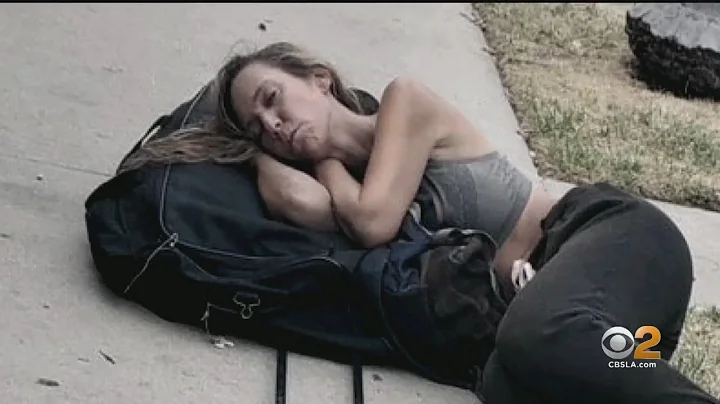According to the documents of the Meihua Town government, the " plum tragedy" occurred from October 12 to 15, 1937, only three after the outbreak of the "Lugouqiao Incident" (also known as " Seven·Seven Incident"). moon. After the "Lugouqiao Incident" broke out, Chinese troops and Japanese invaders fought in the streets and alleys of Beijing. Many historians believe that the "Lugouqiao Incident" was the beginning of the Japanese imperialists' full-scale invasion of China and marked the beginning of the Chinese War of Resistance Against Japanese Aggression.

Soon after the "Lugou Bridge Incident" occurred, the Japanese invaders invaded the Hebei Province surrounding Beijing. On October 11, 1937, Japanese troops invaded Meihua Town.
On the evening of October 11, 1937, Lu Zhengcao, the former head of the 691 regiment of the 53rd Army of the Northeast Army of the Kuomintang led a national party army into Meihua Town. Surrounded by high walls around the town, Lube's patriotic officers and soldiers decided to take advantage of the favorable terrain here to engage in fierce battles with the Japanese invaders. Lu Zhengcao wrote in his memoir published in 1988 that more than 800 Japanese soldiers were killed or injured in this battle. This was the first time that the Japanese invaders suffered heavy losses in Hebei Province.
After the war, Lu Zhengcao decided to lead his army to the south, merge with other Chinese troops, and jointly repel the Japanese invading army that came to support. Before leaving Meihua Town, he advised the local people to flee Meihua Town as soon as possible to prevent the Japanese invaders from retaliating attacks.
Fan Yuexiang's father was a wealthy businessman. She recalled that his father believed that the Japanese army would not slaughter civilians, so he refused to listen to any advice and refused to leave Meihua Town. According to local government documents, there are still many villagers who have stayed. Some people think that the danger of staying is not great. Other villagers did not know Lu Zhengcao's proposal, so they did not evacuate.
In the early morning of October 12, 1937 (the ninth day of the ninth lunar month), most of the villagers were still asleep. More than 5,000 Japanese soldiers invaded Meihua Town. In order to prevent the villagers from joining the Chinese army, they began a tragic massacre.
"My father went out to investigate the situation. I saw the Japanese soldiers take my father away. When they saw the villagers, they started shooting. Many villagers couldn't escape.Fan Yuexiang said. Fan Yuexiang was only 7 years old. She followed her mother and fled to a nearby tavern. The mother and daughter hid there for three days and three nights without any food or a drop of water.
Fan Yuexiang said that she will always Never forget the blood-stained river, never forget, in and out of town, in the streets and alleys, in the alkaline puddles, there are corpses all over the country, devastated. "That's a hell on earth.
Fan Yuexiang’s 14-year-old brother and dozens of villagers were trapped in the courtyard. Japanese soldiers jumped over the wall and shot at them to practice target shooting. Fortunately, Fan Yuexiang’s brother escaped from the door while the Japanese soldiers were resting and survived. Fan Yuexiang said.
However, other relatives of Fan Yuexiang were not so lucky: An aunt of Fan Yuexiang was raped and killed by the Japanese army, and her family was destroyed. Fan Yuexiang said that her finances were robbed by the Japanese army, and all that was left was a broken wall.
In 1958, the party and the government built the plum blossom massacre memorial hall at the Meihua Town tragedy site. Gao Lei, the guide of the hall, told us that the Japanese army beheaded 63 villagers by the pond near the memorial hall, and then shot and killed 45 more. Compatriots and threw their bodies into the well in the east of Meihua Town. The memorial was moved to Shijiazhuang City and rebuilt in 1998. Gao Lei said that 1,547 compatriots were killed in the massacre, accounting for about the population of Meihua Town at the time. 60%. However, this figure does not include the migrant population living here, so the real death toll may be more.
Meihua Massacre Memorial Hall. The museum was built in 1958 and rebuilt on the original site in 1998.
The rebellion began
Commander Lu’s son Lu Tongyu said, “The bloody massacre exposed the barbaric nature of the Japanese army. The villagers thought that the war had nothing to do with them. Now they are awakened from this dream.
What surprised the Japanese aggressors is that the massacre failed to frighten the masses of the people and allow them to compromise. Thousands of innocent lives were killed, which aroused the awakening and resistance of the people, and the anti-Japanese fire intensified. The people in the central Hebei area spontaneously organized into teams and fought against the Japanese invading army for eight years, said 73-year-old Lu Tongyu.
According to government documents, one month after the Meihua Massacre,The county’s Chinese Communist Party member Ma Yutang organized anti-Japanese armed forces and conquered Gaocheng County (now part of Shijiazhuang City) in Hebei Province in one fell swoop. However, Meihua Town was still trapped under Japanese occupation during the eight-year war of resistance.
The success of Ma Yutang increased the confidence of the people and the people of Gaocheng County began to organize local militias to fight the Japanese army. The local people took the initiative to send their own food and other daily necessities to the anti-Japanese base areas to support the anti-Japanese troops.
After Lv Zhengcao led his troops to evacuate Meihua Town, he also made a big victory. Lu Zhengcao wrote in his memoirs that he led his troops eastward and arrived at Xiaoqiao Town, Zhao County, Hebei Province on the evening of October 12, 1937. However, the Kuomintang commander ordered Lu Zhengcao to withdraw, but he still chose to go to the front line of the War of Resistance. He led the troops to break away from the Kuomintang army and form guerrillas to continue fighting with the enemy in northern Hebei Province.
The former Kuomintang army joined the Communist army and took the first step in the war of resistance. In 1938, the number of communist troops exceeded 100,000.
Lu Tongyu said that this unit is the main force of the anti-Japanese base area in Jizhong. In 1983, Lu Tongyu and other descendants of soldiers jointly established the Jizhong Anti-Japanese War Research Association, aiming to study the historical data of the anti-Japanese struggle of the people in Jizhong and the development of individual anti-Japanese base areas.
The research society collected wartime videos and other materials as much as possible, and frequently visited famous sites and areas including Meihua Town. The later feats of the troops led by Lu Zhengcao gave Meihua Town an important place in history. The memorial lecturer Gao Lei said that Lv Zhengcao chose Meihua Town as one of his bases and regarded it as the starting point for subsequent wars. He has always been concerned about the development of the town.
Here is a record of a Japanese perverted crime, as follows:
From 12th to October 15th, 937, the Japanese army planned a terrifying tragedy in Meihua Town, known as the 9-9 tragedy in history.
Since the evening of the 11th, a large number of Japanese have stepped into the wall from the southwest of the town. About 5,000 Japanese people have entered Meihua Town and began to engage in these barbaric acts recklessly. These Japanese broke the original calm of the town, wherever they went, corpses were everywhere. They smashed at the door, killed at the sight of people, and robbed at the sight of things. Plum town was full of flames, whether it was an adult or a child. In great fear,But the worst is the women in Meihua Town.
During these four days and three nights, they captured all the young adults in the town and tied them together. They also arrested more than 100 women from various households and raped and insulted them. Among the captured women Eleven pregnant women were expected to give birth. They dissected them, and the formed fetuses were hung on trees as targets for practice. The other women were gang-raped by the Japanese, and they were assassinated after the Japanese had raped them. However, the most cruel thing was a small operation performed by the Japanese on the girls.
Among the women who were raped at the time were teenage unmarried women. After the Japanese raped them, they were sterilized to prevent them from getting pregnant. It was crazy! So why do you want to do this? Among them, a Japanese mentioned afterwards that Chinese women are not worthy of fertility, as a humiliation!
is really utterly desolate! Their massacre lasted for four days and three nights. After all these captured women and children were brutally murdered and left in the ditch. However, some Japanese did not take it seriously and had no intention of repentance. This is what happened. The saddest part!
.










